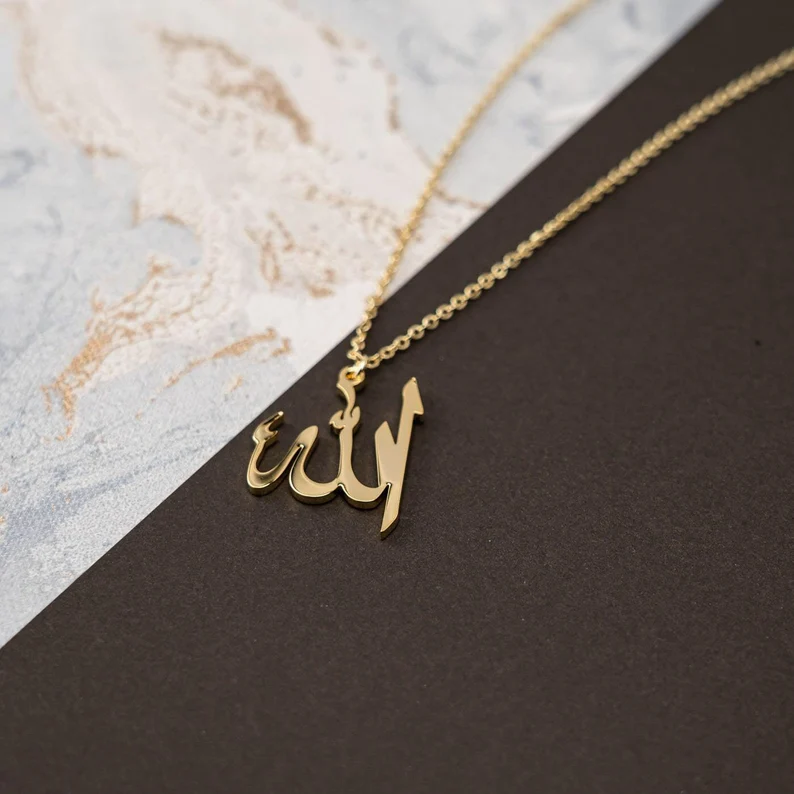
Table of Contents
Islamic jewelry shows influences from different cultures and traditions, mostly from the Byzantine Empire of Rome and the Sasanian Empire of Persia. Over time, jewelry pieces have become more elaborate as more techniques have been incorporated into their designs.
Currently, popular symbols used in Islamic jewelry are mostly taken from the Quran, such as words and phrases used in prayer. The name Allah is also often incorporated in jewelry designs. However, these jewelry pieces must be worn with care since there are strict rules for Muslims when using any item that has the name of Allah embedded or engraved on it.
Let’s take a quick look at some of the most enduring symbols of Islamic jewelry.
History of Islamic Jewelry

Islamic jewelry incorporates different styles and elements coming from various cultures and traditions. While contemporary Islamic jewelry designs show traces of influence from outside cultures, early jewelry designs were inspired by classical styles and practices from the Byzantine Empire of Rome and the Sasanian Empire of Persia.
In particular, the Arab conquest of Iran around 650 AD brought about the popularity of rings, pendants, earrings, and necklaces that had been predominantly used in other cultures beforehand.
During the time of the Mongol and Timurid Empires, Muslim women would wear elaborate hairstyles inlaid with jewels. By the time of the Safavid dynasty, which lasted from 1501 to 1736, Islamic jewelry became more elaborate and used several techniques like repoussé, filigree, and chasing or embossing.
Jewelry designers also made use of niello, a black mixture that is used as an inlay on engraved or etched metal. The pieces were also encrusted with semi-precious or precious stones.
Symbols Used in Islamic Jewelry
While Islam is a religion that doesn’t encourage the use of symbols or imagery, over the years, certain symbols and designs have become associated with deeper meanings and significance in relation to the Muslim culture. Here are some of the more popular Islamic jewelry designs and their meanings:
1. The 4 Qul

The 4 Quls refer to 4 chapters or Surahs in the Quran that contains the foundations of its teachings. Each Surah has a different interpretation, but altogether they are known as the protecting Surahs.
The first two Quls, Surah Al-Kafiroun and Al-Ikhlas, are meant to protect believers from shirk, which is the sin of idolatry or polytheism.
Surah Falaq and Nas, in the other two chapters, protect them from Jinn, which are evil beings, as well as dark magic and other evil influences.
2. Quarter-Crescent Moon and Five-Pointed Star

The image of a crescent of the new moon with a five-pointed star originated in the city of Byzantine and was later adopted by the Ottoman Empire when it ruled the Muslim world. Legends say that Sultan Osman had a vision of a crescent moon hanging over the world when he was on a conquest to take over Turkey.
This image is often depicted in Islamic seals, government stamps, and banners. Several Arab states also use it in their national flags as the quarter-crescent moon, which is synonymous with the start of Ramadan. Arabs believe that the cycles of the moon represent change, transformation, and passage toward a new world.
3. The Word Allah

In the Islamic community, the word “Allah” represents the “Almighty God” and the Supreme Creator of the universe. It has a deeply religious message as this represents the one God who is all-powerful and rules over the world.
The symbol of Allah in Arabic script is one of the most powerful symbols for Muslims. Generally, the script is allowed to be used in jewelry provided that it is worn with proper reverence and respect.
According to the rules of Islam, any item inscribed with the name of Allah must not be exposed to impurities. For example, one must first remove the jewelry containing this script before entering a bathroom
4. Hamsa Hand or the Hand of Fatima

A popular talisman in the Islamic community, the Hand of Fatima is believed to ward off evil and bad luck. Also known as the Hamsa in Hebrew or Khamsa in Arabic, the hand is said to belong to Fatima, who is the daughter of Prophet Muhammad.
The Hamsa Hand is depicted as a right palm with the five fingers held together and pointing towards the sky, with the tip of the thumb curving away from the finger to make the hand look visually symmetrical. Some versions include an evil eye at the palm to represent its function as a protector against evil.
Aside from being an icon of protection, the Hamsa hand also stands for power, defense, and bravery.
It also protects the wearer against the evil eye.
Shi’ite Muslims believe that the hand represents the Five People of the Cloak, referring to a group of Muslim leaders, which includes the Prophet, Mohammad. Sunni Muslims, on the other hand, see the five fingers as representative of the five pillars of Islam.
5. Sun Zenith

The sun is a symbol that is widely associated with life, vitality, and energy in many cultures. In Muslim culture, it is also symbolic of divine glory, and its zenith is known as the spirit that lights up the world and regulates the times of prayer.
The term zenith refers to the highest point of the sun. In the Arabic language, it is referred to as “samt al-ras”, which translates to “path above the head” or “direction of the head”. This is the time when the sun is at its peak, and the shadows on earth are the shortest.
6. Bismillah Calligraphy

An Arabic word that means “In the name of Allah”, Bismillah is the first word in the Quran and is also used to start every Muslim prayer. The complete phrase goes as “BismilahIr-Rahman Ir-Rahim”, meaning “In the name of Allah, the Most Beneficent, the Most Merciful.”
Aside from being used to open a prayer, the phrase is also meant to request blessings for one’s family and to seek protection from evil spirits. Having jewelry printed with “Bismillah” expresses one’s desire to seek guidance and help through the name of Allah.
7. Rub El Hizb

Also referred to as the Islamic Star, the Rub El Hizb is an ancient Islamic symbol that can be found in several emblems and flags in the Muslim community. It is shaped like an octagram that is made up of two overlapping squares.
The Rub El Hizb serves as a dividing system to help facilitate the recitation of the Quran. In the Arabic language, the term Rub El Hizb means something that is divided into quarters, which is reflected in its visual representation. The image stands for every quarter of a Hibz, a section in the Quran, and also marks the end of a chapter.
8. Alhamdulillah Calligraphy

Alhamdulillah is a powerful Arabic word that means “All praise is due to Allah”. In short form, it can also be pronounced as Hamdullah or hamdulilah. This word is an important word in the Islamic community as both the Quran and the Sunnah of Prophet Muhammad teach Muslims to recite this word every day.
In simple terms, the word Alhamdulillah expresses praise for the blessings from Allah. These gifts are immeasurable, which is why people are grateful for receiving this grace. As such, Alhamdulillah is a way of showing gratitude and appreciation for the blessings one has received and is continuing to receive in his life.










